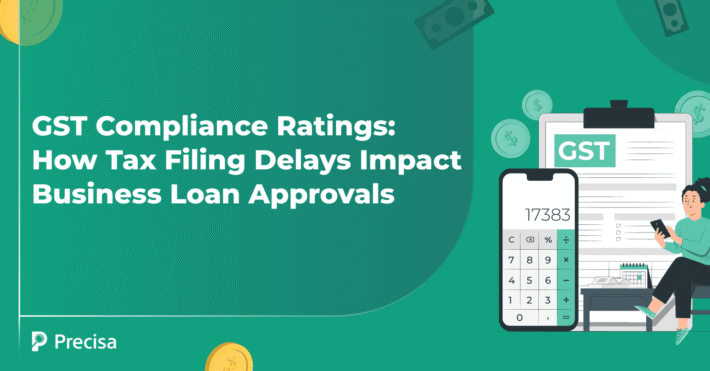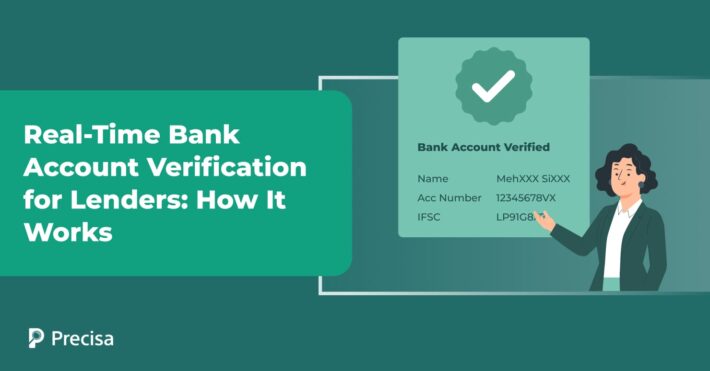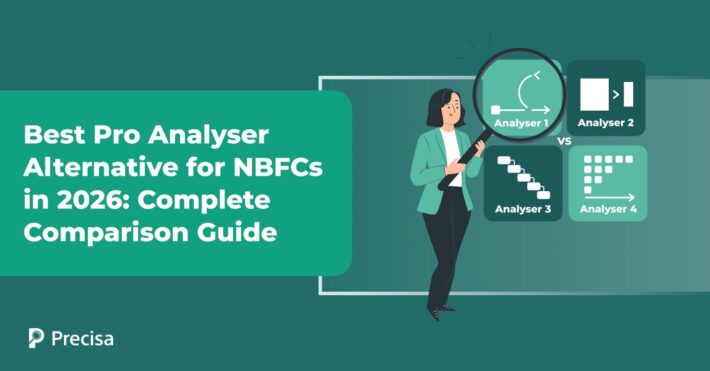14 Red Flags in Bank Statements That Predict Loan Defaults
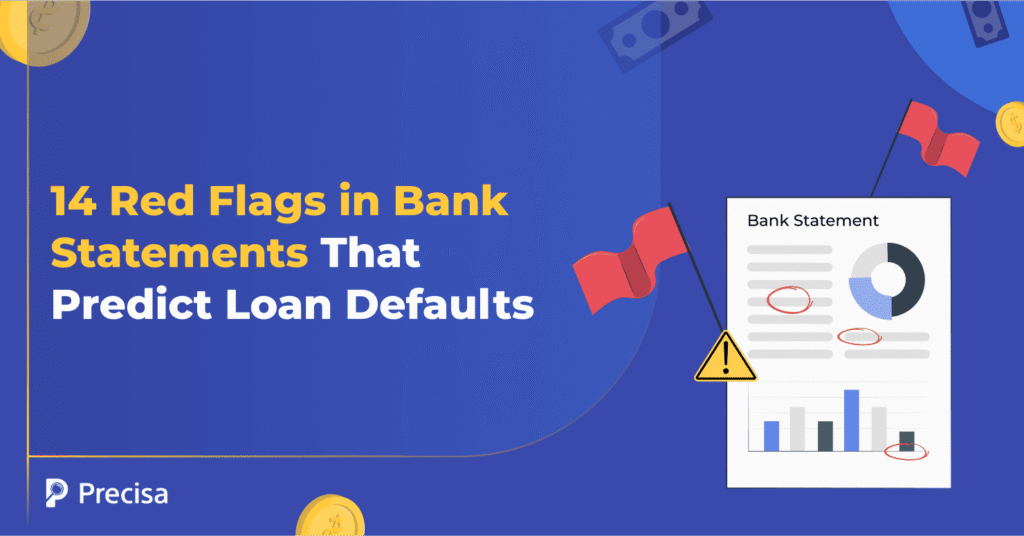
Loan defaults are surging in India, especially for small-ticket and unsecured loans sectors. According to new data from March 2025, delinquencies (overdue by 90 days) spiked to 3.6%. Default rates are notably high among young borrowers and those in tier-3 cities.
While traditional risk-scoring methods work fine, they rely heavily on credit history and CIBIL scores. Hence, they often miss borrowers with thin or no credit files, like first-timers, gig workers, and the young generation.
In such cases, their bank statements become the next best proxy to assess their repayment capabilities.
Most anomalies can be spotted early through bank statement analysis. Fortunately, modern tools and technology have made this process easy and on-the-go. Identifying them at the right time can help you steer clear of potential defaults and fraud.
But why are bank statements more reliable than traditional credit scoring methods?
Why Does a Bank Statement Hold the Key to Predicting Defaults?
While CIBIL scores only display historical data, bank statement transactions provide an unfiltered reality of a borrower’s current financial health. This directly correlates with their repayment ability.
A borrower with a good CIBIL score might be silently struggling with cash flow issues, developing gambling habits, or irregular income. These hidden risks only surface through actual transaction data.
Bank statements expose:
- Current cash flow patterns and spending habits.
- Financial behaviour under stress.
- Day-to-day money management.
- Undisclosed obligations and lifestyle choices.
These day-to-day financial insights make bank statements the most reliable predictor of default (and manipulated documentation) risk.
14 Red Flags that Signal Default Probability in Bank Statements
Here are 14 common red flags in bank statements that hint at loan default during the evaluation process:
1. Irregular Income Patterns
A variable income pattern (seasonal income, missing salary, sudden drops, multiple small deposits) can make repayment planning difficult during economic downturns or emergencies.
This point must be closely checked in the case of gig workers and freelancers. Instead of looking at monthly inconsistency, changing the focal point to quarterly income stability can help.
2. Frequent Bounced Cheques
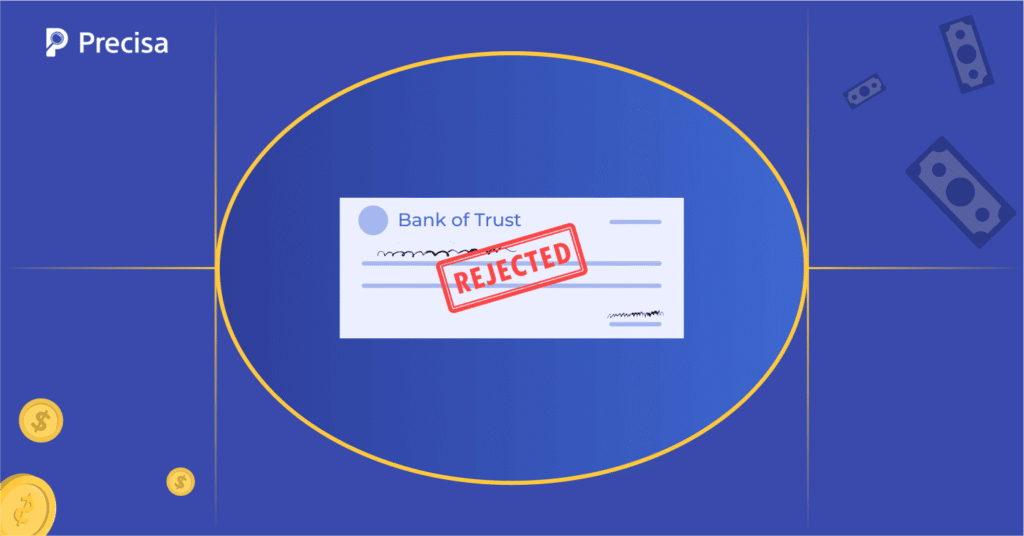
Dishonoured cheques show insufficient funds, incorrect financial planning, and poor repayment behaviour. Bounced cheques (more than two in six months, bounces on utility payments, or amount exceeding Rs 10,000) also suggest that existing financial commitments exceed income capacity.
3. Unusually High ATM Withdrawals
A spike in cash withdrawals versus digital transactions may indicate financial dodges, secondary debts, or undeclared obligations. Daily ATM withdrawals, multiple withdrawals from different ATMs same day, and a cash-heavy lifestyle are some red flags to follow.
4. Minimum Credit Card Payments Only
Borrowers making only minimum credit card payments generally carry high debt loads. This behaviour displays limited disposable income for additional loan payments and paycheck-to-paycheck living.
5. Excessive Overdraft Usage
Borrowers who frequently exceed account limits generally struggle with basic money management, which shows poor cash flow management and financial planning.
A few examples include more than 3 overdrafts in 90 days, overdraft amounts exceeding 10% of monthly income, or extended periods in overdraft status beyond 7 days. Banks charge Rs 500-750 per overdraft. Borrowers accepting these costs regularly show poor financial discipline.
6. Numerous EMIs
Repayments to multiple NBFCs or too many EMI payments mean overleveraging and possible debt traps. Calculate total EMI obligations against monthly income; if it exceeds fifty per cent, it is a clear red flag of high default risk.
7. Gambling and Unusual Merchant Transactions
Digital transactions with multiple betting platforms, casinos, gaming and fantasy portals, and speculative trading apps, like cryptocurrency, suggest addictive behaviours and clear impulse control issues. These often lead to debt-traps.
8. Round Figure Transactions
Frequent round-number transactions or deposits often mean illegitimate cash conversion activities, cash-based business activities, or potential money laundering.
While some borrowers do have legitimate explanations, DSAs and loan officers must deeply investigate such transactions before sanctioning large credits.
9. Peer-to-Peer Loan Payments
P2P borrowing or advanced loan payments to lending platforms that are not linked to formal loans show the borrower’s inability to secure a loan from traditional lenders.
Warning signs include:
- Signing up for more than one P2P platform.
- Paying back a P2P loan with interest rates as high as 18%.
- Getting small loans from informal lenders.
- Using P2P lenders as the main source of credit.
10. Mismatches Between Income and Expenses
When monthly expenses consistently exceed declared income, it shows borrowers lack saving buffers, have poor control over costs, and lead a lifestyle that doesn’t match their income.
This is also true for self-employed customers who do not stack reserve funds for off-months.
11. Unusual International Transactions
Unexpected foreign transactions without a clear business justification might indicate sensitive financial obligations and hidden liabilities.
12. Late Payments and Penalties
Those who regularly pay utility bills or service payments late or are okay to pay penalties might struggle with financial organisation.
13. Declining Monthly Closing Balance
Consistently low or negative closing balances over several months may suggest deteriorating financial health. However, some cases might be genuine, like a medical emergency or long-term treatment, where the closing balance eventually gets better. Therefore, DSAs should track patterns for six months or more to get a clearer picture.
14. Large One-Off Deposits Without Source Clarity
Lump sum credits without matching details, especially just before applying for the loan, may actually indicate the borrower’s attempt to strengthen eligibility manipulatively. Loan officers must stay vigilant of such large one-off deposits.
How Bank Statement Analysis Tools Help Detect Red Flags in Real-Time
Reviewing bank statements manually takes days, if not weeks. The chances of missing critical red flags due to fatigue, biases, or involuntary actions also go up.
On the other hand, modern automated bank statement analysis platforms that use artificial intelligence and updated algorithms process statements in minutes, all the while identifying subtle risk indicators that we often miss.
Explicitly designed for NBFCs, lenders, and DSAs, these cloud-based, easy-to-implement tools simplify complex data points by:
- Parsing through data scattered across PDFs, images, and Excel sheets
- Scanning and categorising large volumes of statements automatically
- Identifying and flagging the red-flag indicators listed above, consistently and without bias
- Detecting sophisticated patterns that are easy to miss, like income suppression, circular transactions, and spurious cash flows
- Calculating financial ratios and delivering structured reports and visual metrics, including probability scores
Doing so, they help lenders reduce defaults and delinquencies, avoid NPAs, accelerate approvals, improve portfolio quality, onboard more customers, and decrease operational costs.
The Takeaway
Bank statements can be incredible lending data sources only if people know how to read and analyse them properly.
By implementing a systematic bank statement analysis system, like Precisa, lenders shift from reactive damage control to proactive risk prevention.
Precisa helps lending institutions and banks reduce credit losses through its cloud-optimised, online bank statement analysis tool. The platform can process 6 to 12 months of bank data in under two minutes and extract meaningful patterns. It gives instant access to average balance trends, income-to-expense ratios, or EMI bounces through AI-powered risk detection.
It also assigns a proprietary Precisa Score, which combines multiple variables to predict default risk more accurately. This score gives underwriters a sharper edge to capture financial behaviour nuances, especially for new-to-credit users and borrowers with informal income sources.
Ready to strengthen your lending decision?
Book a demo to see how Precisa can help you detect potential defaults in real-time.

